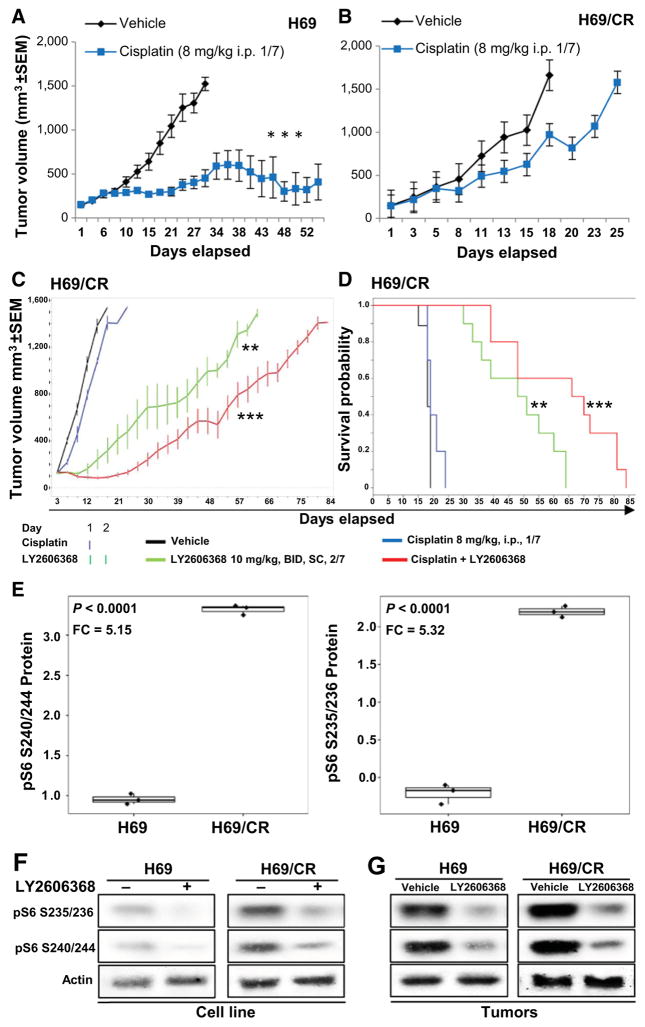Figure 5.
Therapeutic targeting of CHK1 overcomes acquired cisplatin resistance in SCLC. A and B, Tumor volume changes (mean ± SEM; error bars) in mice treated with vehicle (control) or cisplatin in flank xenograft models of parental H69 cells (A), or cisplatin-resistant H69 cells (H69/CR; B). The P values were calculated using the Student t test. C, Tumor volume changes (mean ± SEM) in mice treated with vehicle (control), cisplatin (8 mg/kg once per week), LY2606368 [10 mg/kg, twice daily (BID), twice weekly], or the combination of cisplatin and LY2606368. The P values were calculated using the Student t test. D, Survival of mice treated with vehicle, LY2606368, or cisplatin. The P values were derived by the Mantel–Cox test. *, P < 0.05; **, P < 0.01; ***, P < 0.001. E, Box plots of RPPA markers differentially expressed in H69 and H69/CR cells, as determined by t test. The analysis showed significantly higher expression of pS6 S240/244 and pS6 S235/236 in the cisplatin-resistant cells compared with cisplatin-sensitive cells. FC, fold change. F, Immunoblot analysis of H69 and H69/CR cells before and after treatment with LY2606368 (24 hours; 100 nmol/L). The basal expression level of pS6 S240/244 and pS6 S235/236 was lower in nontreated H69 cells than in nontreated H69/CR cells, and this was further abrogated by treatment with LY2606368. Actin was used as a loading control. G, Western blot analysis of tumor lysates from H69 and H69/CR tumors with or without treatment with LY2606368. The basal expression level of pS6 S240/244 and pS6 S235/236 was lower in H69 vehicle tumors compared with H69/CR vehicle tumors, and this was further abrogated by treatment with LY2606368. Actin was used as a loading control.

